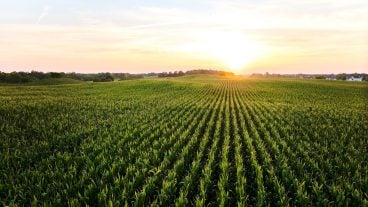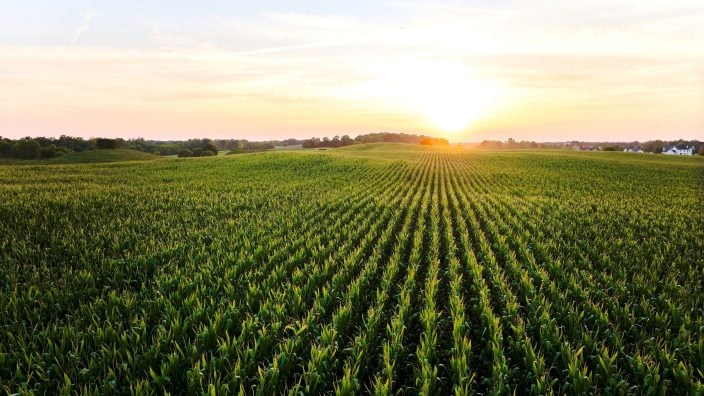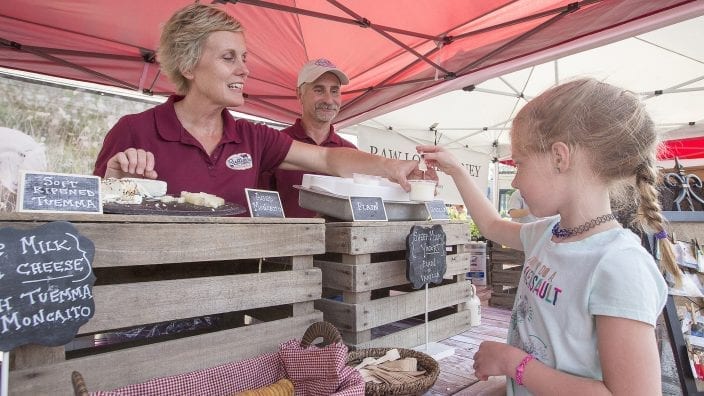Farmer’s Guide to Trucking Regulations available to Ohio Farm Bureau members
The guide includes a farm driver checklist, overview of state and federal regulations and exemptions, CDL qualifications and more.
Read More
Finally! It seems like the weather is improving. Most everyone is tired of rain day after day. Baseball games, time to mow the lawn, itching to plant the garden … or maybe you are just looking forward to some sunshine and warm weather.
Farmers have been watching the weather for these reasons and to see when they can get into the fields to start planting this year’s crops.
We know it has been a wet spring by the rainfall totals and full ponds, but there is another measure we can use — USDA’s weekly crop progress report. I looked up the most recent report for the amount of corn planted as of May 19. This report shows the stats on the 18 states that planted 92 percent of the 2018 corn acreage. A five-year average for May 19 is that 80 percent of the corn across the U.S. has been planted. Last year, we were at 78 percent.
This year, we are at 9 percent.
Texas is the only state reporting a higher percentage planted than on this date last year. North Carolina, Tennessee, and Colorado are doing well with near average totals.
So with all the rain, who is the furthest behind? Ohio.
Last year was a good year as we were 7 percent ahead of the five-year average of 62 percent. This year, we are really behind, having only 9 percent of this year’s corn crop planted.
Indiana is at 19 percent, which is 59 percent behind average. Pennsylvania and Michigan have 19 percent of their corn planted. And Illinois has 24 percent of their corn planted, which is 65 percent behind average.
After I read an article about GMOs by my favorite agricultural blogger — The Farm Babe, Michelle Miller — I did some Internet surfing to find everyday items that contain corn. Even when you leave most food products and corn-sweetened drinks off the list, there are still a lot of products that contain corn byproducts.
Ethanol is alcohol derived from corn and used as a fuel additive. If you ever want to have an interesting conversation on the economics of ethanol production, talk to my husband, Gary.
Chelation is made with cornstarch and is the component in drywall that prevents mold growth.
Corn is used to make many different types of adhesives like plywood glue, school glue and glue sticks, and even the adhesive you lick to seal an envelope.
Personal care items are also included. Skin, hair and bath care, and eye, facial and lip cosmetics commonly contain corn by products like starch, oil, meal, powder, germ, extract, gluten protein, kernel, acid, glycerides and potassium cornate.
Still don’t think that corn is important to you? How about spark plugs? When cornstarch is heated, some of its crystalline structures harden and become insulators that protect the ceramic in the spark plugs from the high heat and acid solvents in the engine of your car.
There are many more, but just one more — disposable diapers. Corn byproducts are used for its absorbent properties instead of the original, environmentally unfriendly cellulose based polymers.
How did “they” figure out how to do all of this? Agricultural research. Careers in agriculture are worth pursuing. Continued investment in all kinds of agricultural research is critical to all society.
Submitted by Mary Smallsreed, a member of the Trumbull County Farm Bureau, who grew up on a family dairy farm in northeast Ohio.
OFBF Mission: Working together for Ohio farmers to advance agriculture and strengthen our communities.


The guide includes a farm driver checklist, overview of state and federal regulations and exemptions, CDL qualifications and more.
Read More


Ohio Farm Bureau provides opportunities, platforms and resources to help you develop your voice in the industry and give farmers a seat at the table with leaders and legislators.
Read More

The emergency fuel waiver to allow the sale of summer gasoline blends containing 15% ethanol will lengthen the period during which Americans can continue buying E15 from June 1 to Sept. 15.
Read More

The Small-Scale Food Business Guide covers federal and state regulations for selling food products such as raw meat, dairy, eggs, baked goods, cottage foods, fruits and vegetables, honey and more.
Read More

New resources and technology are broadening the different types of sales tools and strategies available to farmers.
Read More

ODA will enroll 500,000 acres into the program for a two-week sign-up period, beginning April 22, 2024, through May 6, 2024. Contact local SWCD offices to apply.
Read More

Katie Share of Columbus has been named ExploreAg and Youth Development Specialist for Ohio Farm Bureau.
Read More

Mary Klopfenstein of Delphos has been named Young Ag Professional and Ag Literacy Program Specialist for Ohio Farm Bureau.
Read More

The plan has been updated to give sole proprietors access to more rate stability and a smart solution that offers potential savings on health care.
Read More

The American Farm Bureau Federation, in partnership with Farm Credit, is seeking entrepreneurs to apply online by June 15 for the 2025 Farm Bureau Ag Innovation Challenge.
Read More